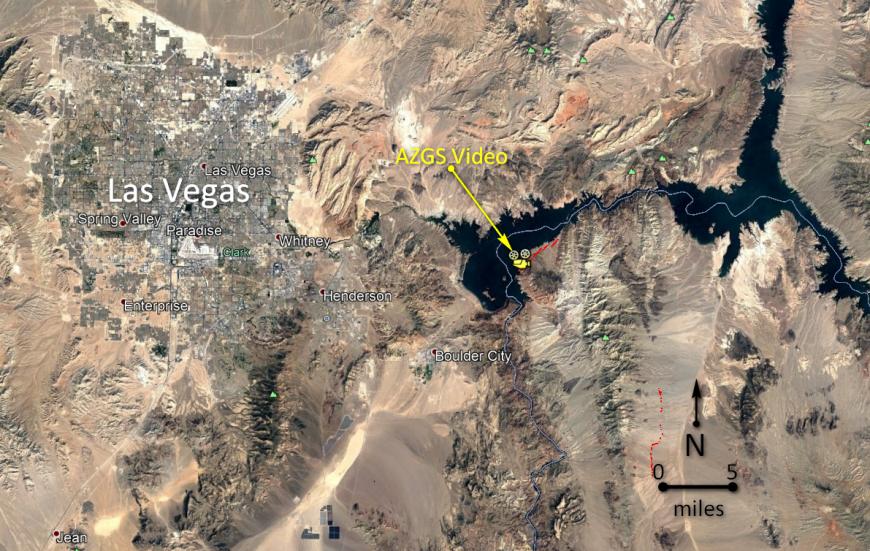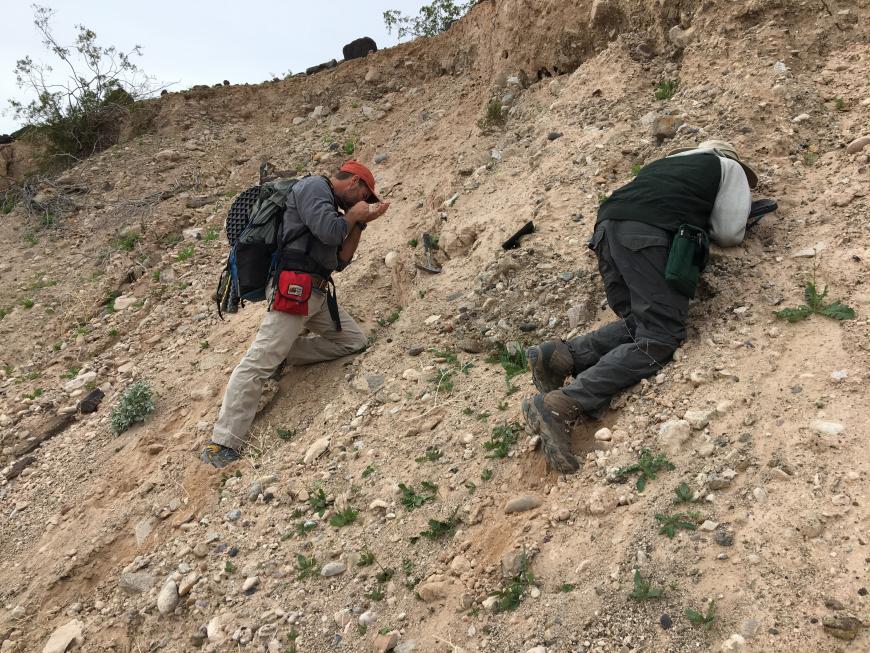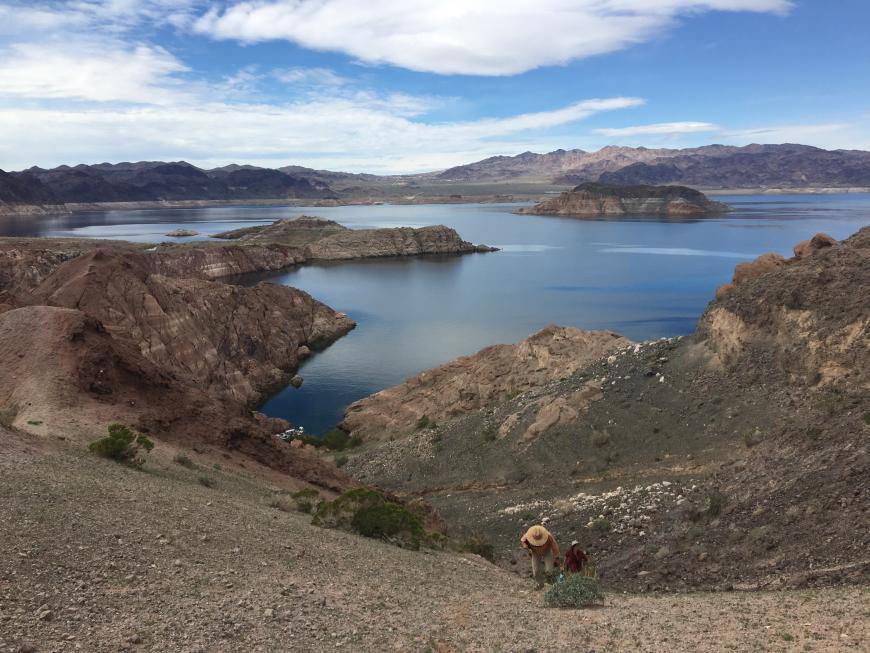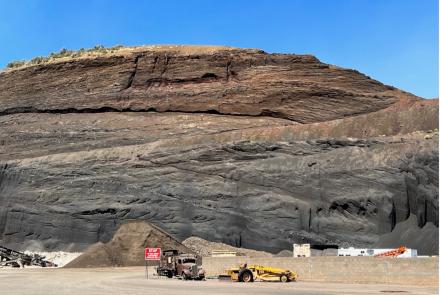Mead Slope Fault Mapping, Lake Mead, Arizona
The Arizona Geological Survey is studying the Mead Slope fault (35-s video), located on the southeastern side of Boulder Basin, Lake Mead area, Arizona, in hopes of determining the fault’s activity. This fault system is close to Hoover Dam, so understanding the history of faulting is very important for evaluating seismic hazard in the area.
The MSF is one of a number of fault zones in the Las Vegas area that is geologically young (has evidence of late Quaternary activity), but the close proximity of the MSF to Hoover Dam is particularly concerning as it impounds the largest reservoir by volume in the U.S. and supplies water to millions of people in Arizona, Nevada, and Southern California. The NE-SW-trending Mead Slope fault system is one of several faults in the Lake Mead area that have accommodated substantial late Cenozoic left-lateral displacement (e.g., Anderson et al., 2013, Pearthree, 1997).
The MSF stands out in that it clearly displaces Quaternary alluvial fan and terrace deposits, ranging in age from early Pleistocene to as young as latest Pleistocene-early Holocene (Anderson and O’Connell, 1993). There is obvious evidence for recurrent fault movement in the form of larger fault scarps on older alluvial surfaces, but there are essentially no quantitative constraints on the slip rate or recurrence intervals on the fault zone.
We completed our first round of reconnaissance mapping and are preparing to create a detailed digital elevation model (DEM) from drone photos, and GPS ground control points, pending our permit to operate the drone in the Lake Mead Recreational Area. The DEM will allow us to calculate the amount of offset along the fault, and determine the fault’s activity.
Results of the Mead Slope fault study will be published in an open-file report later this year or in 2019.
-
Anderson, R.E., Beard, L.S., Mankinen, E.A., and Hillhouse, J.W., 2013, Analysis of Neogene deformation between Beaver, Utah, and Barstow, California: Suggestions for altering the extensional paradigm: GSA Special Paper 499, p. 1-67.
-
Anderson, L.W., and O’Connell, 1993, Seismotectonic study of the northern portion of the Lower Colorado River, Arizona, California and Nevada, Bur. Of Reclamation Seismotectonic Report 93-4, 1-94 p.
-
Pearthree, P.A., compiler, 1997, Fault number 1009, Mead Slope fault, in Quaternary fault and fold database of the United States: U.S. Geological Survey website








